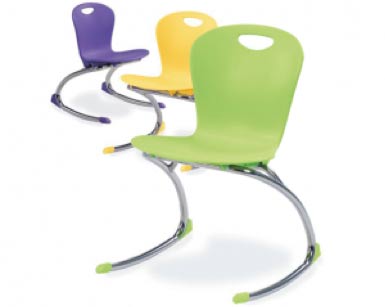What the Zuma Rocker teaches me about Senses, Integration of their Inputs and End Products
Mary Read from Take Part Occupational Therapy Ltd offers some handy learning tips for therapists becoming familiar with Sensory Integration Theory. She highlights these tips using a piece of Southpaw equipment to help meet your clients’ needs.
That’s just a Rocking Chair isn’t’ it?
Freddie (not his real name) is struggling at his mainstream school. He exasperates his teachers by fidgeting all the time. He struggles to stay on his seat during lessons and is frequently up and off around the classroom, disrupting other children.
Freddie has some difficulties with his movements – he is quite clumsy, he doesn’t seem to know what his body is doing. He looks at other children to copy them when they sit cross legs on the floor. Ask him to balance with his eyes shut and he’s all over the place.
Sometimes Freddie is over excitable and sometimes he appears really drowsy. This changes through the day, often worse by the afternoon.
Give him a class seat that rocks, what seriously?!

What’s going on here – how can the Zuma Rocker make a difference?
Dr Jean Ayres, who was the founding inspiration behind Sensory Integration Theory, drew up a handy model to illustrate how the senses in our bodies follow a developmental pattern. At their simplest level, our bodies at the earliest stages of life pick up sounds, vision, touch and movements from within and outside the body. How our bodies process and organise these senses helps us develop skills such as posture, balance, muscle tone for example. This is the so-called “Integration of the Inputs”. This term was coined by Dr Ayres back in 1979. (see the reference at the end)
How does the “Integration of Inputs” lead to “End Products”?
Woah, is this getting a bit technical here? What are these strange terms?
End Products are the behavours we see. Freddie is distractible, poorly coordinated and needs lots of movement to help him concentrate and stay at that “just right” level of alertness so he can learn. Ideally, his end products should be
- His ability to concentrate
- His ability to get organized for class work
- His ability to manage his self-control
Freddie needs some help with his “Integration of Inputs” i.e. his body needs more opportunities to “feed” his nervous system. He needs more of the senses that help him calm and organise.
What senses are stimulated while sitting on the Zuma Rocker?
You know about the vestibular system, right?
The vestibular system is the sensory system which picks up movement against gravity and changes in direction. It’s a really early and important one developmentally. When we rock, we stimulate the vestibular system.
If we rock in a linear way (straight line back and forwards) it is understood to help the nervous system calm and become more organised. Interestingly, crazy spinning and rapidly changing direction and stop/start movements have the opposite effect – they cause the nervous system to become more excitable.
The Zuma rocker only goes backward and forwards, that’s a good thing for Freddie if he needs calming and help to get organised.
Let’s see Freddie on the Zuma Rocker
Freddie loves his new chair. His “End Products” have improved! His vestibular senses are being stimulated and this helps him integrate all the senses he needs for posture, balance and concentration. Most importantly for his teacher, Freddie is remaining much longer at the table and his spelling has improved. After going out to play, Freddie still takes a while to settle back down, but sitting on the chair soon brings him back to a place where is able to concentrate again.
Don’t Forget
Every child is different. You will need to have a good understanding of the sensory needs and the individual circumstances of your child to know whether the Zuma Chair is right for them.
The reference for the book which describes the model is “ Sensory Integration and the Child” by A.J. Ayres, 1979, Western Psychological Services, Los Angeles.

